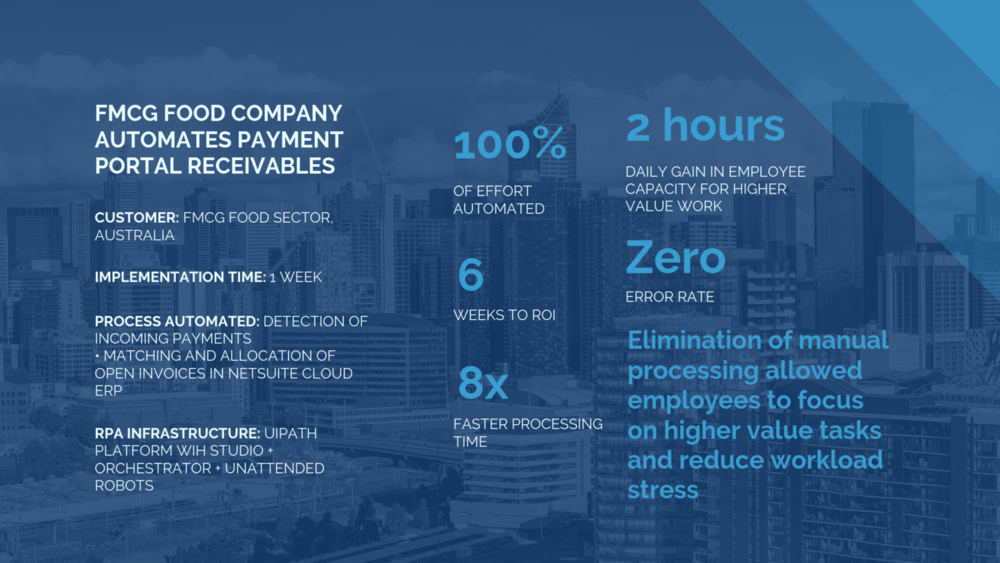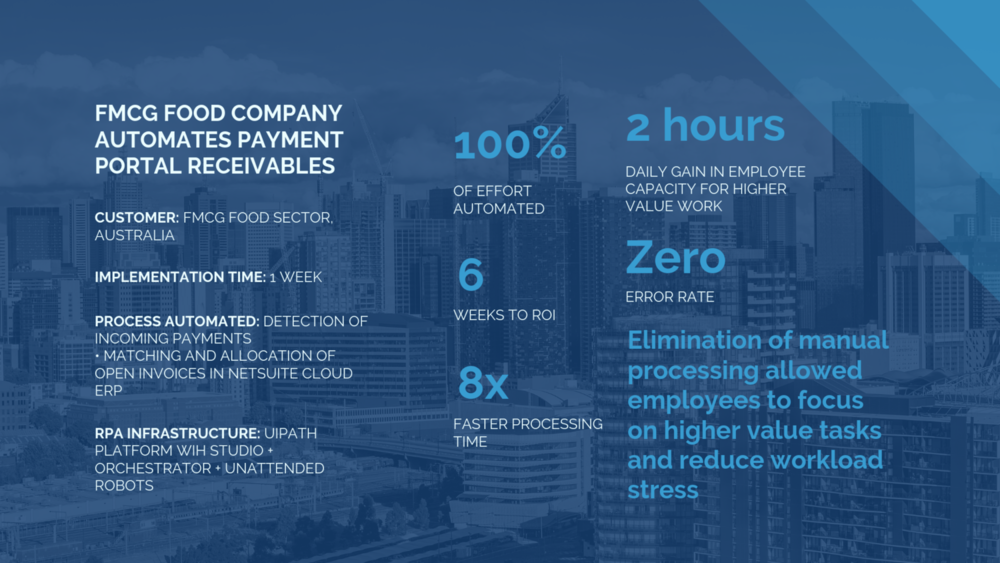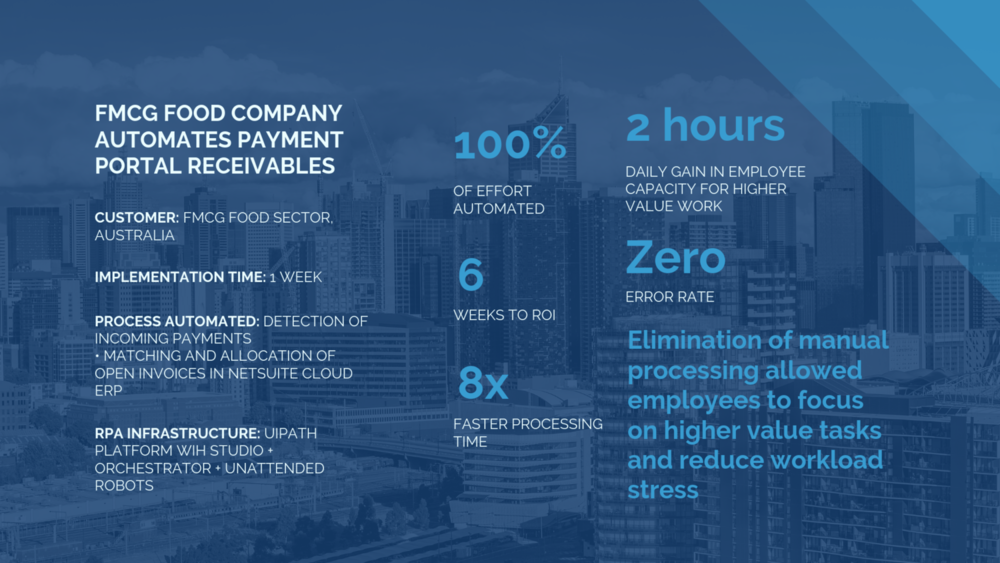How Industry Leaders Use RPA for Their Benefit
Original post from https://www.cigen.com.au/cigenblog/
In the ‘automation first’ era, thoughts about the use of automation for improving efficiency are expected to become quasi-automatic.
That is, before engaging in dull, time consuming manual work, employees would consider automating these tasks in order to bring them to completion in a much faster, more secure, and more accurate way.
But how can industry leaders use RPA to make their companies increasingly successful and thus ensure that they remain competitive?
The FORWARD III conference in Las Vegas last year was the right place to get an answer to this question.
The most effective way to show digitisation novices how they can use RPA for their benefit is to bring into discussion its quick wins, which are the outcome of automating routine, dull tasks, the so-called low hanging fruit processes.
Reference to short-term financial gains, such as a return on investment of up to 200% in the first year of use, can make a convincing case for the utility of implementing RPA, and foster an enthusiastic perspective of the digital transformation. As an illustration, Figure 1 shows the benefits obtained by a CiGen Australian client in the FMCG sector, after 1 week of implementation time.
“Reference to short-term financial gains, such as a return on investment of up to 200% in the first year of use, can make a convincing case for the utility of implementing RPA, and foster an enthusiastic perspective of the digital transformation.”
CLICK TO TWEET

Fig. 1 Australian FMCG food company automates payment portal receivables
Often, these early successes come from pilot programs, which are quick, inexpensive, and have a measurable impact on business operations. They demonstrate the potential to be automated of your selected key applications or business rules. As such, pilots are very helpful in raising C-suite leaders’ confidence in the value of software robots.
How industry leaders benefit from the use of RPA
According to Deloitte’s third annual RPA Survey, automation exceeded implementers’ expectations across many dimensions, such as improved compliance (92%) and accuracy (90%), higher productivity (86%), or cost reduction (59%).
These beyond-expectations benefits perfectly justify why industry leaders use RPA, and also why its adoption is on the rise, forecasted to reach the market value of 12$ billion by 2023. In what follows, we will share some efficient best practices for how you can also use RPA for your benefit, paving the way towards your company’s competitive advantage over market rivals.
1. Widen your perspective of RPA beyond financial benefits
Doubtlessly, these gains are easiest to observe. However, the most successful executives are those who also consider the positive influence of software robots on productivity, employees’ job satisfaction, and overall performance.
This is because benefits on these dimensions support the expansion of automation across various sectors of your business, e.g., marketing, research, IT, product development, HR.
2. Examine the feasibility of the RPA project extensively
This is a natural consequence of the previous point. By including a variety of dimensions in the justification of your RPA business case, you emphasize its potential to be successful. Moreover, a broad business case, which includes superior accuracy, increased speed to market, reduced risk, employee engagement and satisfaction, etc., is likely to foster support for your project from stakeholders and staff as well.
3. Do not pinch and save on investments
We are not talking only about technological investments, but also about contributions for experts in the field, or governing processes. According to Protiviti’s global RPA survey results from 2019, the front runners of RPA put in ten times more money than their competitors. So if you plan to enter the ‘golden league’ of successful RPA leaders, you might as well follow the route of those who are already there.
*
Thank you! An expert will get in touch soon.
4. Aim for enterprise-wide RPA deployment
Scaling is necessary for leveraging the full-fledged benefits of automation. According to a recent Gartner worldwide survey, 58% of the companies consider operational scalability to be a top business priority.
In order to really use RPA for your benefit, you should make sure that your company’s IT infrastructure provides a strong foundation for software robots’ operations across the company. Starting with effective, longer-term plans for RPA implementation and further deployment raises the likelihood of scaling up.
We also recommend that you stay prepared for future technological developments, by choosing RPA tools that can afford transition towards intelligent automation and cloud applications.
A revealing example of the benefits of RPA for cloud applications is given by a legal firm that automated database migration to Cloud. CiGen has helped the firm migrate 400 property lot records from MS Access Database to a Cloud based application, thereby removing the need for manual entry of records. You can see the benefits in the figure below.

Fig 2 Legal Firm Automates Database Migration to Cloud
5. Address employees’ concerns about ‘robots stealing their jobs’
Worries about job disruption are certainly one of the most important causes for staff’s resistance to RPA deployment. In order to tackle this potentially troublesome attitude, explain to your employees what the automation project is being used for. Helping them see more clearly where the software robots will assist them in their day-to-day responsibilities, and how this assistance forges a pathway towards higher value job activities, should temper employees’ emotional resistance.
The way industry leaders use RPA could, in fact, provide a good example to the personnel regarding the increased job satisfaction brought about by digitisation. Emphasize the human-centred facet of RPA adoption, and show your employees that your strategies do take into account the future of work.
Conclusion
The advance of RPA fits well on the timeline of the industrial revolutions. Engines mechanized production and reconfigured labour during the First Industrial Revolution, industrial robots based on electric power enabled mass production during the Second, and information technology was used to automate production in the Third.
Software robots set the trend for the Fourth Industrial Revolution, where a distinct wave of automation disrupts the way we work today by digitally transforming the operations. Although it is easy to view the paradigm shift that we are currently experiencing as technology-centred, industry leaders use RPA in a profoundly humanist way.
This is so because bots allow human employees to leverage their human specific expertise and focus on higher value tasks that involve complex decision making, creativity, thinking “outside the box”, or interpersonal skills.
If you want to find out more about other companies’ RPA practices – we interviewed 2,500+ Australian professionals last year about the extent of their automation projects. Subscribe to our newsletter below and be the first to find out when we release the results of the survey.
Leave a Comment
You must be logged in to post a comment.








